Hydrangeas are perfect garden bushes. The plants are quick growing, low maintenance, and produce loads of bright, voluminous blooms.
Naturally, they grow as multi-stemmed shrubs, and need occasional pruning to keep them in shape. But have you ever seen tree form hydrangeas at a nursery?
Looking a little like a lollipop, these standard trees are a tall, sleek, modern twist on the beloved blooming bush.

We link to vendors to help you find relevant products. If you buy from one of our links, we may earn a commission.
It’s tempting to add a few of these lollipops to your cart, but thanks to the years-long process required to shape and allow a plant to mature, they can be pricey.
Not to worry: if you have some patience and keep reading, you can learn how to train your own hydrangeas into a tree form.
If you need a refresher on how to grow and care for hydrangeas, see our guide.
Here’s what we’ll cover:
What You’ll Learn
Considerations
Tree form plants are also known as standards. You can find standard lavender, maples, gardenias… the list goes on and on.
The best species that you can choose to create a tree from is the panicle variety, H. paniculata, which is actually sometimes called the tree hydrangea.

These bushy plants, with their large, conical blooms, are hardy in Zones 3 to 9. They flower on new wood, creating their buds in the spring, and are fast growing and resilient.
As you get ready to do some serious clipping, keep in mind that clean tools are essential during the entire process.
You don’t want to transmit disease pathogens or pests to your plants, which will be in a compromised state after pruning, particularly after the first trim.
Disinfect your shears or clippers by dipping them in a 10 percent bleach solution before beginning, and between plants.
Start Snipping
You can start with a rooted cutting like the nursery people do, or with a more established plant.
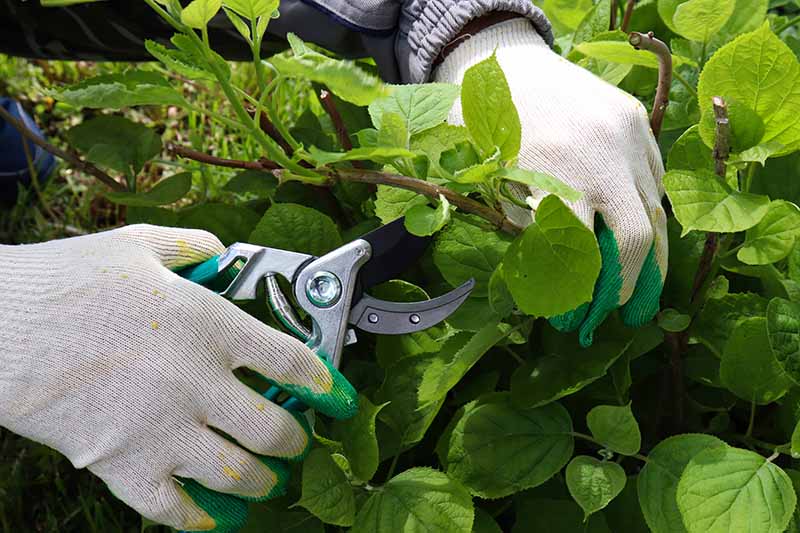
Either way, have some patience! It can take over five years to shape a perfectly pruned tree form hydrangea, so be prepared to develop a close relationship with your pruning shears during this process.
The tree form shrubs that you can find at the nursery, such as the ‘Little Lime’ option that’s available at Nature Hills, were likely trained to be standards from the very beginning.
Tall hardwood cuttings are stripped of all but a few leaves and branches at the top. The apical meristem, or the tip responsible for upward growth, is clipped out to encourage development of the lateral meristems, or those that will grow branches.
This is just like pinching a flowering plant to encourage more flower-bearing branches to grow.
Once rooted, and when the top is producing new leaves and stems, several minor pruning sessions to follow will encourage the branching growth that will create the round top.
Years of pruning and shaping, cutting out any suckers from the crown, removing leaves or branches that sprout from the trunk, and keeping the top branching out into a rounded shape, will result in the standard shape like you can find at the nursery.
While rooting hydrangea cuttings isn’t difficult, and you could start from scratch like commercial growers often do, it adds quite a bit of time to the process.
So, why not start with a small plant instead of a rooted cutting?
In the spring or summer, choose a healthy plant of your favorite panicle hydrangea variety. You will be doing a lot of snipping, so the more vigorous the plant is, the better it will come through these harsh pruning sessions.
You can choose a young plant that’s planted in the ground, or one that’s still in a pot. It’s best to choose a plant with stems that aren’t too thick yet; around a quarter of an inch in diameter is perfect.
No doubt the shrub will have multiple stems, so pick the most upright center-oriented stem as your leader. Clip away the other stems as near to the soil line as possible.
Secure the main stem with a bamboo stake and use gardening tape or ties to keep it upright and straight. Position the stake close to the trunk and sink it at least six inches into the ground, taking care to avoid damaging the roots.
The following spring, remove any branches that have grown from the bottom two-thirds of the main stem.
Snip the tip of the main stem off as well, cutting below a leaf node. This removes the stem’s apical meristem and encourages it to branch outwards rather than growing longer.
You can cut it at whatever length you wish, but anywhere around three feet, if the bush is that tall, is common.
Pruning the head of the tree must be done at least once every year in the early winter, otherwise the branches may grow too long and crack from the weight of flowers, or under snow that blankets them.
You are aiming for a full, rounded head. Shape the top by pruning branches six to eight inches from the top of the trunk. Cut branches just above a node.
As the plant grows each year, remove any side shoots that appear from the crown of the plant and out of the trunk as they appear.
The beauty of panicle types is that they bloom on new wood, so even after pruning them hard in the early winter they will still bloom the following spring.
Keep the tree braced and supported against wind for a few years, allowing the trunk to thicken and strengthen. The stake can be removed when the trunk can support the tree top.
Once you’re happy with the height and shape, continue with early winter maintenance pruning as you would with other types of hydrangea bushes, to keep the shape compact and round.
Best Uses
After all the work you’ve put into it, a tree form plant deserves to be the focal point of your garden or patio.
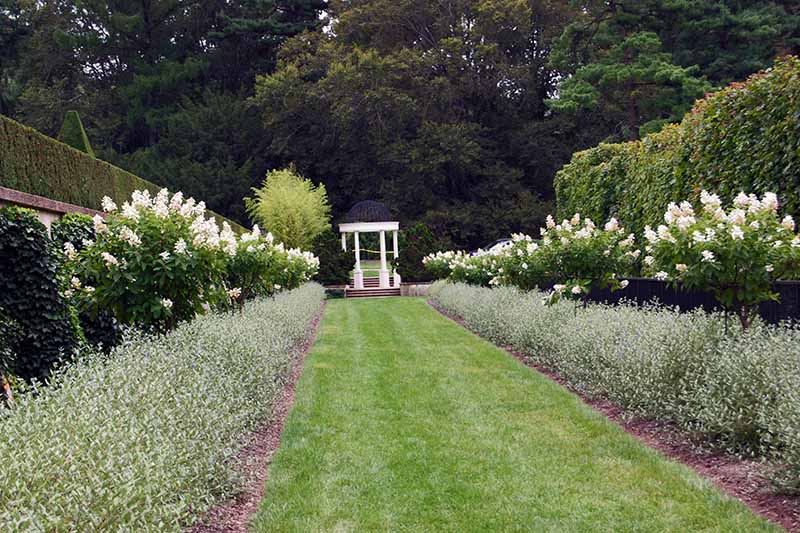
I’ve seen tall white-blossomed hydrangea standards alternating with big purple lavender bushes lining a driveway, with a thick layer of colored mulch and a manicured lawn to complete the look. Beautiful!
Feature them in a pot on your porch, adding flowers like petunias to the pot for layers of color.
Plant them along a fence, as sentinels at your doorway, or in your garden among other bushes and plants as you would a shrub hydrangea.

In a pot, they make great gifts as well!
Lollipop Hydrangeas
There is no doubt that a ball of big, bright blooms on a stick is eye-catching. Now that you know how to form one yourself, I’m sure no one would blame you if you went ahead and added lollipop hydrangeas all over your yard!

Sure, it takes some patience and work to create one, with several years of necessary pruning before it looks like a finished product, but the effect is worth it.
If you try this and have questions, leave us a comment. Plus, share some photos of your creation!
And for more information about growing hydrangeas in your garden, have a look at these guides next:
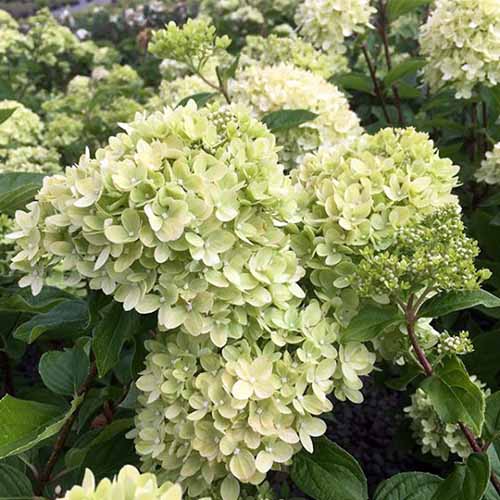
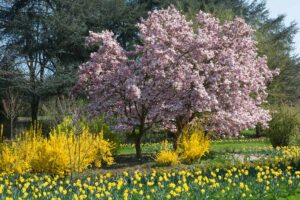

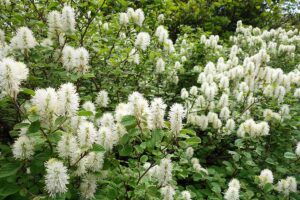
How do I trim this tree to become fuller
Hi Hilda,
Do you have more photos? I’m having a hard time seeing the tree you are referring to. Thanks!